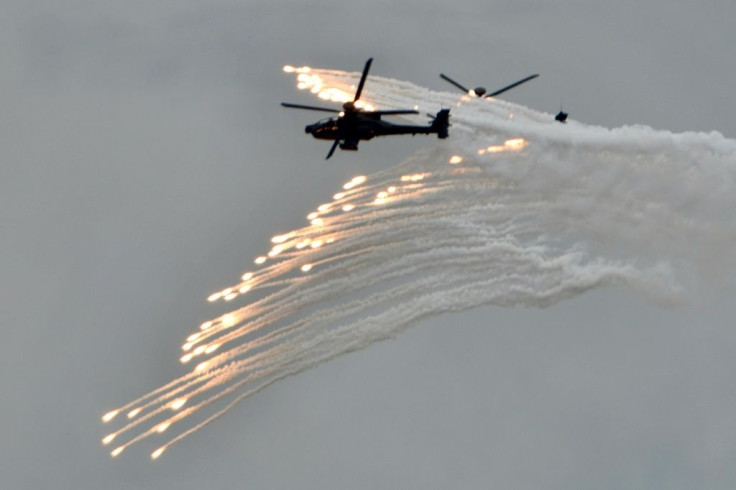US, Japan Hold Joint Anti-Sub Drill in South China Sea As China's Submarine Force Grows
KEY POINTS
- A JMSDF submarine joined the drill with the U.S. Navy for the first time
- Japan has also announced an in-house mine warfare exercise with the U.S. Navy
- A drill with the navies of the U.S., Australia, Germany, and Canada is also scheduled
The U.S. Navy and Japan Maritime Self-Defense Force jointly carried out an anti-submarine warfare exercise in the South China Sea, Japan Maritime Self-Defense Force (JMSDF) said Wednesday.
The move to highlight the two navies' growing capabilities comes as China's submarine force gains power and proficiency.
U.S. Navy destroyer USS Milius and a U.S. Navy P-8A maritime patrol aircraft did a joint exercise with Japanese helicopter destroyer JS Kaga and destroyer JS Murasame as part of the drill. An unnamed Oyashio-class submarine and a P-1 Maritime Patrol aircraft too joined the exercise held at the disputed waters, said a report by USNI.
Reports add that this is the first time a JMSDF submarine is conducting an anti-submarine warfare exercise with the U.S. Navy in the South China Sea. Both Kaga and Murasame had carried out a drill with USS Milius last week in the region.
The JMSDF had recently issued two news releases on exercises soon taking place in Japan. According to a release issued on Nov. 9, the JMSDF will carry out both an in-house mine warfare exercise and a bilateral mine warfare exercise with the U.S. Navy from Nov. 18 through 28 in the Hyuga Nada Sea off Kyushu.
The exercises will have 17 JMSDF minesweepers, one minesweeper tender and two MCH-101 Mine Counter Measure helicopters from the Japanese side. The U.S. Navy will deploy two MCM ships along with two MH-53E helicopters, the statement added.
Another exercise, scheduled from Nov. 21 to 30, will feature two multilateral exercises. The first multilateral drill will include the JMSDF, U.S. Navy, the Royal Australian Navy and the German Navy, while the second involves the JMSDF, U.S. Navy, Royal Australian Navy (RAN) and the Royal Canadian Navy (RCN).
A total of 20 JMSDF ships, 40 JMSDF aircraft, 10 U.S. Navy ships, two RAN ships, a single RCN ship and a single German Navy ship will take part in these drills.
These drills assume significance as analysts highlight the growing power of China's submarine force. A report by Military.Com quotes analysts who think China already has more than 40 submarines capable of firing long-range and supersonic ASCMs.
"Coupled with effective reconnaissance and over-the-horizon targeting, a few of these submarines could devastate a strike group almost anywhere in the theater with a massed, multiaxis attack," the report added.
The analysts think the U.S. carrier strike group needs "more and better antisubmarine warfare platforms to defend against these increasingly potent weapons."
Recently, the PLA Navy had reconfigured its new generation Type 094 submarines, capable of firing ballistic missiles that can reach the US mainland. These subs also possess deceptive tactics to hide their identification numbers.
The U.S. display of its military might comes as the South China Sea witnesses tensions in the Taiwan Strait.
Amid this, President Joe Biden had maintained that he was not encouraging Taiwan's "independence." "I said that they have to decide -- Taiwan, not us. We are not encouraging independence," Biden said. "We're encouraging that they do exactly what the Taiwan Act requires," he added.
Meanwhile, Chinese President Xi Jinping had warned that encouraging Taiwanese independence would be "playing with fire" amid the virtual summit with Biden.

© Copyright IBTimes 2025. All rights reserved.





















